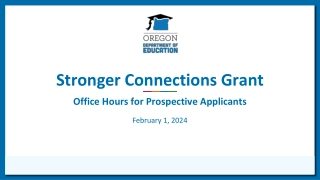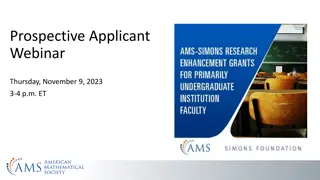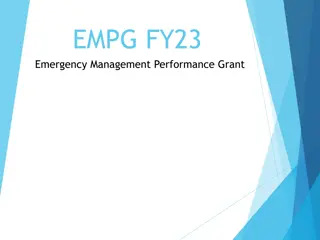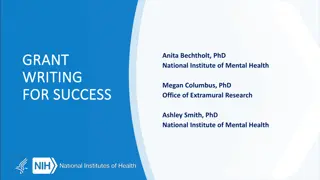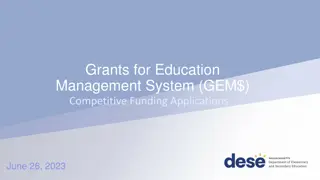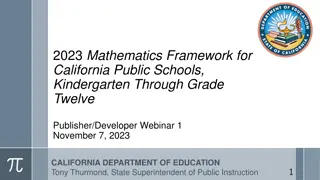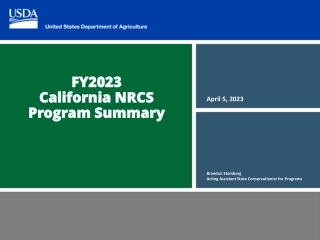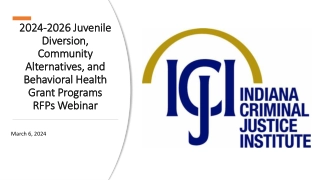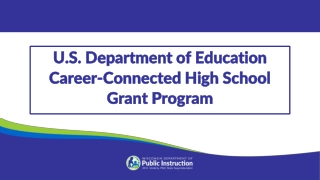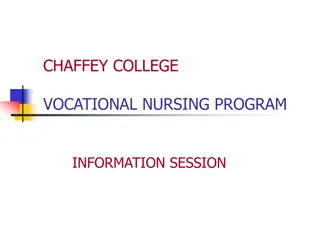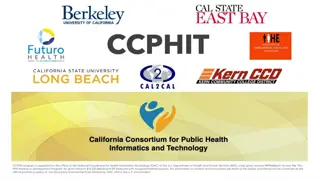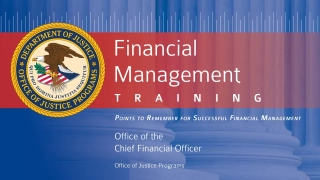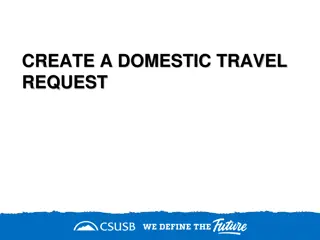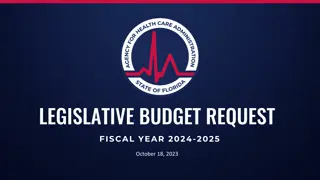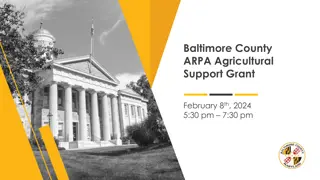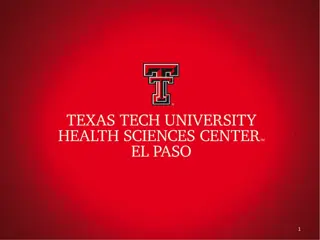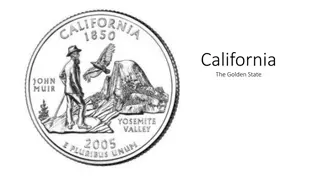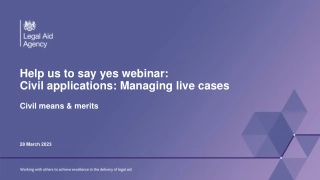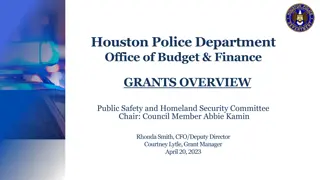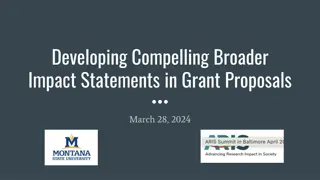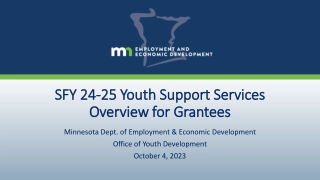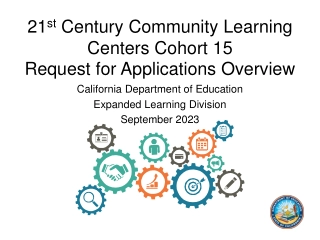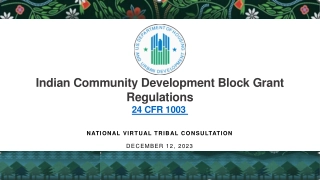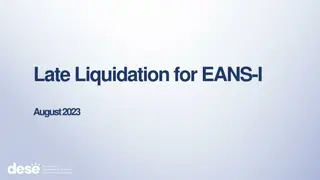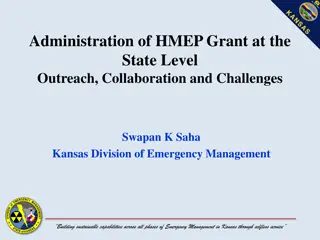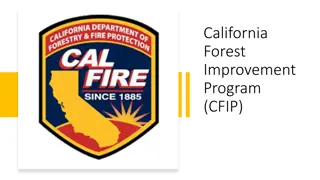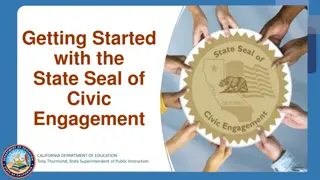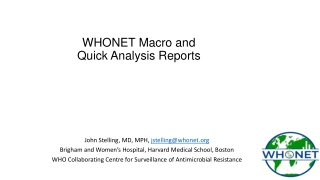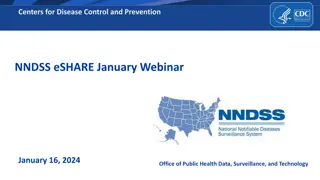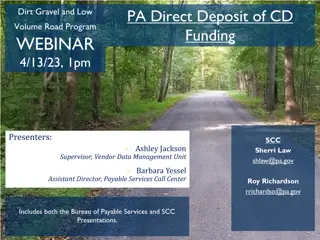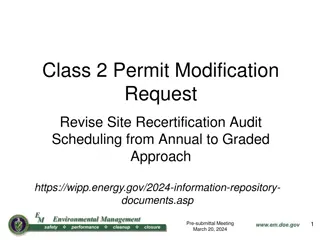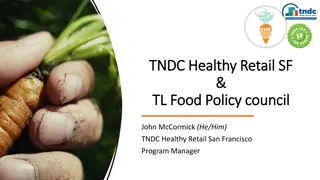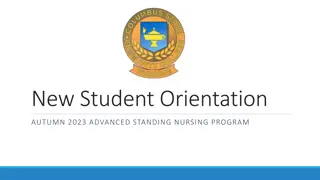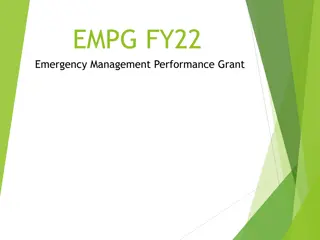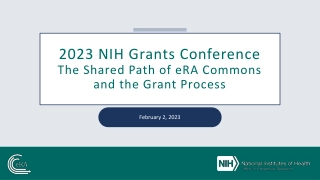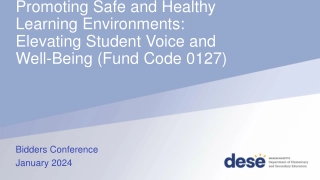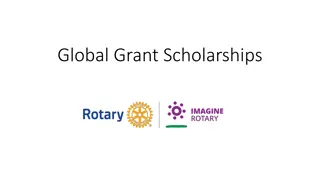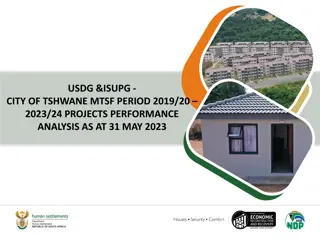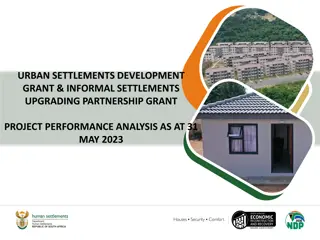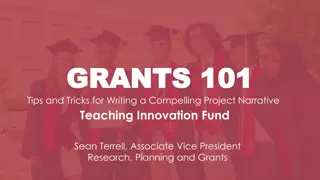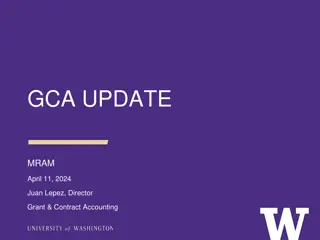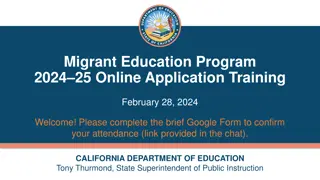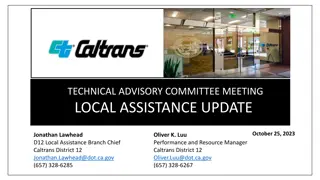California Serves Grant Program Request for Applications - Webinar Summary
The California Serves Grant Program, established by the 2022 Education Omnibus Budget Trailer Bill, aims to promote service learning for twelfth-grade students to expand access to the State Seal of Civic Engagement. This program provides annual grants of up to $500,000 to eligible local educational agencies, with funds available from June 1, 2024, to June 30, 2026. The program funding criteria prioritize well-justified applications with realistic activities. For more details, visit the California Department of Education webpage.
California Serves Grant Program Request for Applications - Webinar Summary
PowerPoint presentation about 'California Serves Grant Program Request for Applications - Webinar Summary'. This presentation describes the topic on The California Serves Grant Program, established by the 2022 Education Omnibus Budget Trailer Bill, aims to promote service learning for twelfth-grade students to expand access to the State Seal of Civic Engagement. This program provides annual grants of up to $500,000 to eligible local educational agencies, with funds available from June 1, 2024, to June 30, 2026. The program funding criteria prioritize well-justified applications with realistic activities. For more details, visit the California Department of Education webpage.. Download this presentation absolutely free.
Presentation Transcript
California Serves Grant Program Request for Applications Application Webinar Presented by the Professional Learning Support Division February 8, 2024 CALIFORNIA DEPARTMENT OF EDUCATION Tony Thurmond, State Superintendent of Public Instruction
Housekeeping Webinar participants have been placed on mute. Question/Answer session toward the end of the webinar. PowerPoint will be available on the California Department of Education (CDE) California Serves Program web page: https://www.cde.ca.gov/pd/ca/hs/californiaserves.asp. Slide notes are present throughout this presentation. 2
Program Authority The 2022 Education Omnibus Budget Trailer Bill (Assembly Bill 181, Section 71) added California Education Code [EC] Section 51475, which establishes the California Serves Program, administered by the CDE in collaboration with California Volunteers. The California Serves Program will promote access to effective service learning for students in grade twelve, with the goal of expanding access for high school graduates in obtaining a State Seal of Civic Engagement (SSCE) through service learning. 3
Program Funding (1) The California Serves Program includes a grant, appropriating $5 million annually to the CDE for annual awards to eligible local educational agencies (LEAs). Funds available to each applicant are based on the content and quality of the submitted application and proposed activities. Each award amount for the California Serves Grant shall be no more than $500,000 for the entirety of the grant period. 4
Program Funding (2) The CDE will fund successful grant applications at the level requested if the program application is well- justified, the proposed activities are realistic and well-supported, and sufficient funding exists. If successful applications exceed the funds available, the CDE will apportion the grant funds at its discretion. An LEA that applies for funds shall, at a minimum, demonstrate a need for service learning resources and training in support of offering the SSCE locally, and describe how the funds will be used. 5
Program Funding (3) LEAs may begin work on the California Serves Grant funds beginning June 1, 2024. These funds are available for expenditure or encumbrance through June 30, 2026. 6
Program Purpose (1) Funding for the annual grant program is intended to support expanding access to the SSCE through high quality service learning programs. The CDE will develop and administer this grant program in collaboration with California Volunteers, including developing grant criteria, developing an application process, requesting data from participating LEAs, and awarding grants. 7
Program Purpose (2) Under this program, LEAs may use grants for: - Paid planning time for teachers to increase the use of service learning in instruction - Professional development on service learning for administrators and teachers - Purchase of instructional materials to help integrate service learning in instruction - Participation costs, including materials or travel expenses related to service learning activities 8
Program Purpose (3) - Personnel costs for coordinating service learning at the LEA or a school site - Participation costs associated with grant program evaluation Emphasis shall be on programs that demonstrate rich civic engagement and learning in pursuit of a SSCE. 9
Applicant Eligibility (1) Per EC Section 51475(a), applicant eligibility is limited to LEAs, defined as a school district, county office of education, or direct funded charter school, within the State of California that serves students in grade twelve. Additionally, per EC Section 51475(d), at least 55 percent of the pupils enrolled in the applicant LEA shall be unduplicated pupils as defined in Section 2574 or 42238.02, as applicable. 10
Applicant Eligibility (2) Please review the California Serves Eligibility spreadsheet available from the CDE California Serves web page to determine your LEA s Unduplicated Pupil Count and eligibility to apply for this grant. Community agencies, private schools, individual public schools, state special schools, and LEAs that previously received a California Serves grant are not eligible to apply for a California Serves Grant. 11
Reporting Requirements (1) To ensure the successful implementation of the California Serves Grant Program, grantees are required to submit interim progress and end-of- project reports to show that program outcome measures are being met alongside an expenditure report to show how funds were actually spent. These must include any and all elements required by the CDE, as well as any locally determined measures. 12
Reporting Requirements (2) LEAs will be expected to measure outcomes in areas specifically identified in the LEA s grant application. Program outcomes identified in the California Serves Grant Program application can target and include, but are not limited to: - Number of SSCE insignias awarded or anticipated - Government or U.S. History course pass rate - School attendance rate - Chronic absenteeism rate - Pupil suspension rate 13
Reporting Requirements (3) - School climate, as measured by the California Healthy Kids Survey School Climate Module, or other applicable school climate survey - Interview and focus groups with participating students Applicants should measure the number of SSCE insignias awarded and/or anticipated, as well as at least one other measurable objective. 14
Program Deliverables (1) The grantees must provide a summary of activities in a report identifying contributions including, but not limited to: - Proposed measures to evaluate progress towards the program goals, including implementing service learning programs that lead towards awarding of the SSCE - Resources (including training materials, videos, briefs, etc.) to support teachers, administrators, pupils, and other school staff that provide support for local SSCE programming 15
Program Deliverables (2) - Technical assistance and professional learning opportunities provided for purposes of implementing and expanding access to the SSCE through service learning - Number of participating educators, disaggregated by role, classrooms, and schools - Number of students earning and actively working towards the SSCE through service learning 16
Resources to Support Application Development 17
Quality Professional Learning Standards The Quality Professional Learning Standards (QPLS) lay the foundation for creating a coherent set of professional learning policies and activities that span the career continuum of an educator, leading to improved educator knowledge, skills, and dispositions and, ultimately, increased student learning results. The standards describe the criteria for quality professional learning and point educators and stakeholders toward using evidence-based elements and indicators when making decisions about how to create and/or improve professional learning in their own systems. 18
Service Learning and the Inquiry Cycle (1) Strong applications will keep in mind the following considerations and resources: - EC Section 51475(d)(4) defines service learning as an educational approach that intentionally combines meaningful community service activities with instruction and reflection to support pupil progress toward academic and civic engagement learning objectives while meeting societal needs. Applications should include programs that reflect this definition. 19
Service Learning and the Inquiry Cycle (2) - Consider service learning programs that require students to engage in a cycle of inquiry (for example, the inquiry arc outlined in the College, Career, and Civic Life Framework) that guides students from developing compelling civic questions and investigating those questions, finding and evaluating evidence to answer them, and communicating and/or taking civic action on those answers. - Consider incorporating suggestions and research from Appendix H: Practicing Civic Engagement: Service-Learning in the History Social Science Framework of the 2017 California History Social Science (HSS) Framework. 20
Service Learning and the Inquiry Cycle (3) - All service learning programs should explicitly support student progress towards a SSCE upon graduation, including fulfilling all five SSCE statewide criteria in addition to any additional local criteria and additional program requirements. - Develop service learning experiences in an ongoing process that allows educators, administrators, communities, and students to define civic engagement and service needs. - Set specific goals based on the needs of the school and any problems identified to be addressed. 21
Service Learning and the Inquiry Cycle (4) The CDE Resources to Support Civic Engagement web page also features foundational resources on civic learning, civic engagement, and service learning. 22
Defining Evidence-Based Professional development and curriculum for the California Serves Grant Program shall use evidence-based strategies. For the purposes of this grant, the CDE has borrowed the following definition for evidence-based practice. As defined by the Every Student Succeeds Act (ESSA), an evidence- based practice is an activity, strategy, or intervention that demonstrates a statistically significant effect on improving student outcomes or other relevant outcomes based on strong evidence, moderate evidence, promising evidence, or a rationale with ongoing efforts to examine the effects of activity, strategy or intervention. 23
Requirements of the California Serves Grant Program Application 24
Submission Requirements (1) Complete an electronic application available on the California Serves Grant Request for Applications (RFA) web page. Online Application Instructions for the California Serves Grant Program are included in the Appendix of the RFA. Respond to all sections of each prompt of the narrative description. 25
Submission Requirements (2) Separately attach supporting evidence, such as budgets and timelines, as applicable. Provide the appropriate digital signature. Submit the application by March 11, 2024, before 4 p.m. Refer to the scoring rubric for the California Serves Grant Program to understand how responses for each application will be evaluated by the reading panel. 26
Saving Responses Select the Save Responses button on the first page of the online application if you do not intend to complete the application in one session. Ensure the email address you provide is accurate. Copy the unique URL (web address) for entrance back into the application. 27
Application Maximum Point Values Section Point Value Executive Summary Theory of Action Demonstrated Need Proposed Activities (including timeline) Proposed Metrics Proposed Project Budget and Proposed Budget Narrative Note: Budgets may be requested to be revised. 4 points 12 points 12 points 24 points 16 points 8 points 28
Overview of the Application Narrative The application narrative for the California Serves Grant Program contains the following sections: - Executive Summary - Theory of Action - Demonstrated Need - Proposed Activities - Proposed Metrics 29
Executive Summary (1) Provide an executive summary statement, containing the following: - The current status of the SSCE in the applicant LEA - A summary of the theory of action (applicants will expand on this in the next section) which addresses how the LEA will promote access to effective service learning for students in grade twelve, with the goal of expanding access for high school graduates in obtaining a SSCE through service learning 30
Executive Summary (2) - An approximate number of educators and students to be affected by this work - How the LEA plans to use these funds to promote access to effective service learning for students in grade twelve, with the goal of expanding access for high school graduates in obtaining a SSCE through service learning 31
Theory of Action (1) Articulate a theory of action which will support the goals of the grant to promote access to effective service learning for students in grade twelve, with the goal of expanding access for high school graduates in obtaining a SSCE through service learning. The U.S. Department of Education defines a theory of action as: a framework that identifies key project components of the proposed projects (i.e., the active ingredients that are hypothesized to be critical to achieving the relevant outcomes) and describes the theoretical and operational relationships among the key project components and relevant outcomes. 32
Theory of Action (2) Include the following in the response: - What are the LEA s specific goals based on the needs of the LEA and any problems identified to be addressed? - How will the LEA identify participants for the activities of this grant? - How will the LEA ensure active participation? - What are the outcomes expected by the LEA as a result of the grant activities? 33
Demonstrated Need (1) Service Learning Climate: - Describe the general climate within your LEA as it pertains to civic engagement, service learning, and the SSCE for the past 12 24 months, including describing student population subgroups that have been involved in these opportunities and the nature of their involvement. 34
Demonstrated Need (2) Equitable Access: - Who are the students that would benefit most from achieving the SSCE through service learning? - What do you know about their academic, social, and civic experiences? - In what ways would a service learning program help promote civic engagement and learning, including equitable access to the SSCE? 35
Demonstrated Need (3) Past and Ongoing Service Learning Efforts: - Describe past and/or ongoing opportunities that exist for students to engage in service learning and civic engagement, including working towards a SSCE. - If the LEA currently offers the SSCE, please describe relevant local programming to offer the SSCE through service learning. - If the LEA does not yet offer the SSCE, please describe service learning and civic engagement opportunities available to students that will form the basis of a local SSCE program. 36
Proposed Activities (1) Summary of Proposed Activities: - Articulate the LEA s proposed activities regarding how they will address the goals of the California Serves Grant Program. - Explain how funds will be used for eligible training, resources, and other activities to promote access to effective service learning for students in grade twelve, with the goal of expanding access for graduates in obtaining a SSCE through service learning. - Proposed activities should reflect an understanding and integration of the five statewide SSCE criteria, and the definition of service learning as outlined in EC Section 51475(d)(4). 37
Proposed Activities (2) Current Research: - Describe how the applicant will leverage current research and work related to service learning and student civic engagement. - If the LEA proposes to implement Professional Development (PD) and/or curriculum, detail which evidence-based strategies will be utilized. 38
Proposed Activities (3) Timeline: - Provide a timeline (as an attachment) that thoroughly and convincingly illustrates the sequence of events and activities of the project that includes the person or organization responsible for each activity, the expected goal of the activity, and how the effectiveness of the activity will be measured. 39
Proposed Metrics (1) Grant recipients will be required to report to the CDE all of the following information: - The number of participating pupils, schools - The demographics of pupils engaged in service learning as a result of the grant - The impact of the service performed by pupils and school staff as a result of the grant 40
Proposed Metrics (2) Describe what other measures the LEA will use to assess pupil outcomes in the academic, civic engagement, and other learning objectives. What other types of data would you expect to see to demonstrate that effective service learning programs are leading to expanded access to the SSCE? 41
Proposed Metrics (3) Describe the methods that will be used to collect the outcome data. Describe the LEA s capacity to collect the identified outcome measures. Describe the process the LEA will use to analyze and respond to the data collected to ensure optimal student and educator impact. 42
Budget Overview Covers the entire grant period (June 2024 June 2026). Includes six tabs: - One tab for applicant information - One tab for the budget summary - Three tabs for the budget narratives (one tab for each year of the grant) - One tab for form approval (for CDE use only) Submit as an Excel file attachment. Will be reviewed and scored. 43
Completing the Application Budget (1) The applicant must provide a thorough and detailed justification for each identified cost associated with implementing the proposed goals and activities, including why the costs are reasonable and necessary to support the proposal s goals and activities. The budget should specifically include funds to support internal administration of the SSCE, such as personnel, record-keeping resources, and communication. 44
Completing the Application Budget (2) Please note that although the grant period ends on June 30, 2026, LEAs may expend all California Serves Grant Program funds early. Complete only the sections of the budget forms necessary to align with the project s timeline. 45
Completing the Application Budget (3) Provide expenditure amounts for the following areas: - Internal staff compensation - Compensation for educators or substitute costs associated with participation at professional learning events - Supplies required to support LEAs and grant participants - Services provided by the applicant and external entities - Any travel and/or communication expenses - Indirect charges 46
Completing the Application Budget (4) The Proposed Budget must include a detailed budget narrative (description) for each line-item included in the grant period. The narrative should include how the proposed costs are necessary and reasonable in terms of grant activities, benefits to participants, and grant outcomes. Provide sufficient detail and a breakdown/calculation that justifies each line item. Group line items by the Object Code series and provide lines for Object Code totals. The Proposed Budget Summary should provide totals for each Object Code and should align with the Proposed Budget Narrative. 47
Review Process Only fully completed applications will be considered eligible for consideration and advance to the Reader Conference. A panel of readers selected for their expertise will read, review, and score each eligible application using a scoring rubric (see rubrics in the RFA). Although scores are important, they will not be the only factor considered when selecting awards. 48
Application Timeline Activity Date RFA Release Week of January 22, 2024 Application due to the CDE March 11, 2024, by 4 p.m. Intent to Award posted Week of April 29, 2024 Last day for Appeals to be received by the CDE One week after Intent to Award is posted Final Awards posted May 27, 2024 49
Questions? 50


